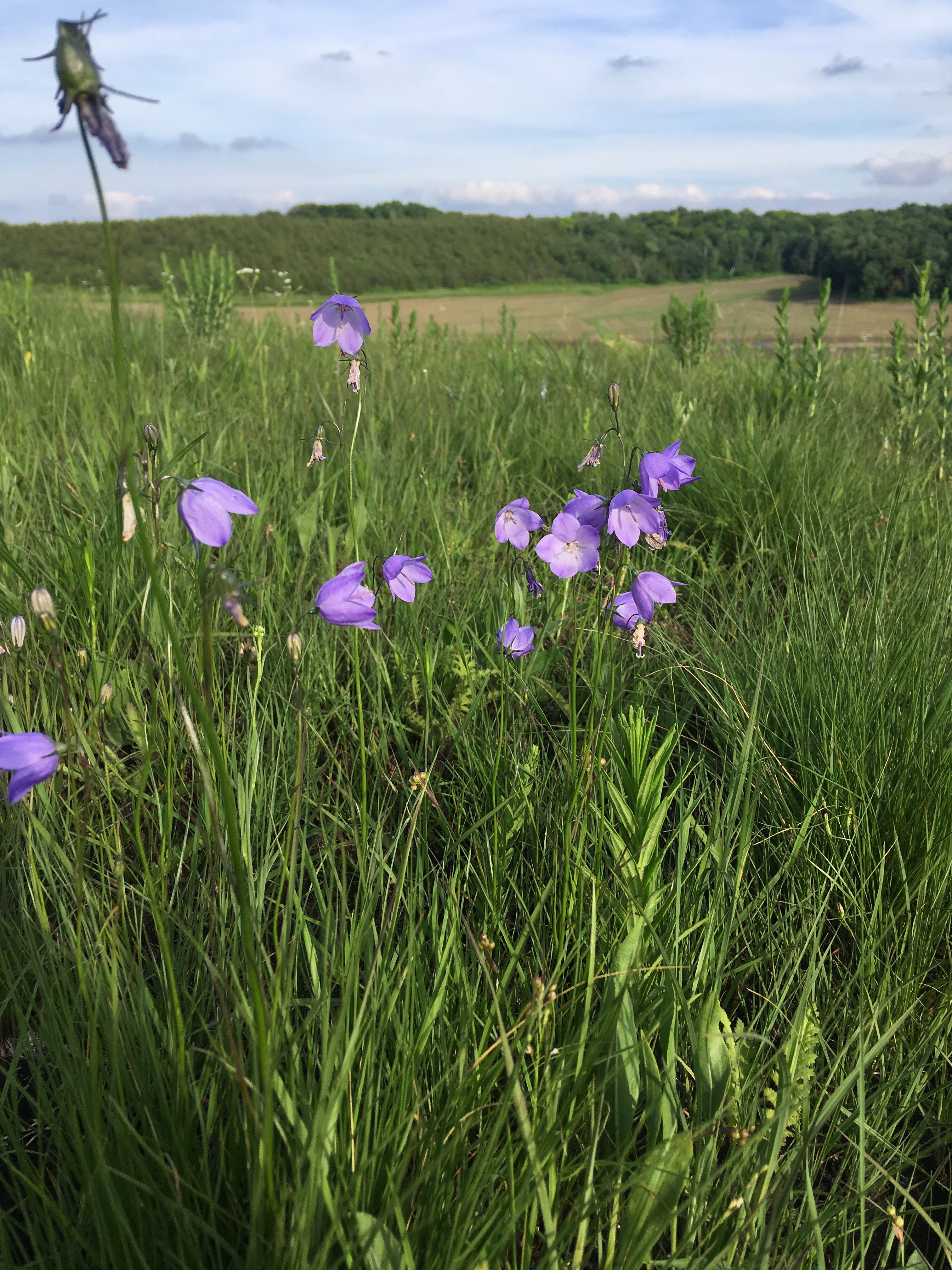Plant of the Week: Campanula rotundifolia
Plant of the Week! A delicate-looking, yet tough native forb, Campanula rotundifolia, Harebell, can be found on rocky outcrops and bluffs, as well as sandy prairies and open woods. The names “Campanula” and “Harebell” might make you cringe, but this plant is not the invasive Campanula rapunculoides that enjoys taking over our yards! The native Harebell differs in several ways:
1.) Overall they are shorter in stature, ranging from 6-20 inches, whereas invasive Creeping Bellflower (C. rapunculoides) grows from 12-36 inches.
2.) The flowers of native Harebell are arranged in loose racemes, sometimes only containing a single flower, while Creeping Bellflower has longer, more obvious racemes.
3.) Despite its species name, all but the basal leaves of Harebell are quite narrow. Creeping Bellflower’s leaves are heart-shaped, and can resemble those of some asters.
Native Harebell is pretty easy to grow. It grows in well-drained soil in full to part-sun, and has few diseases or pests. It’s a great choice for rock or crevice gardens, or to naturalize as a woodland underplanting.





